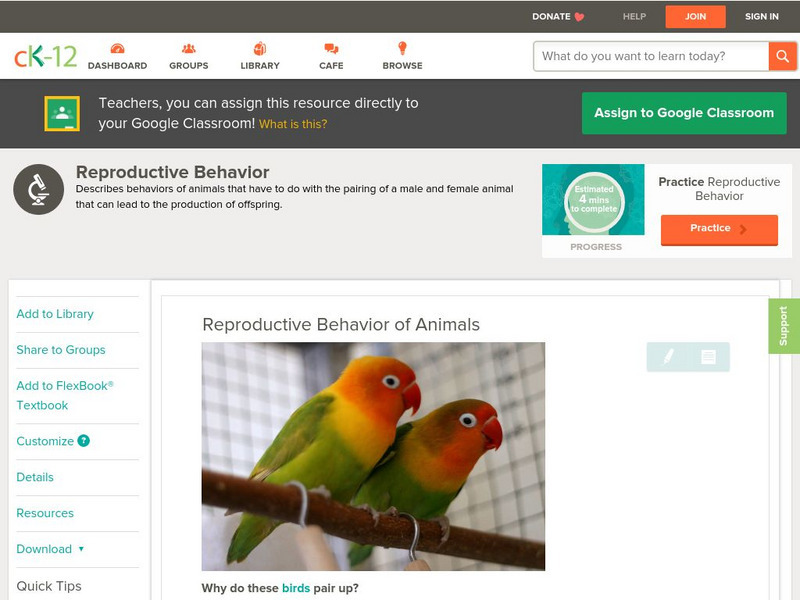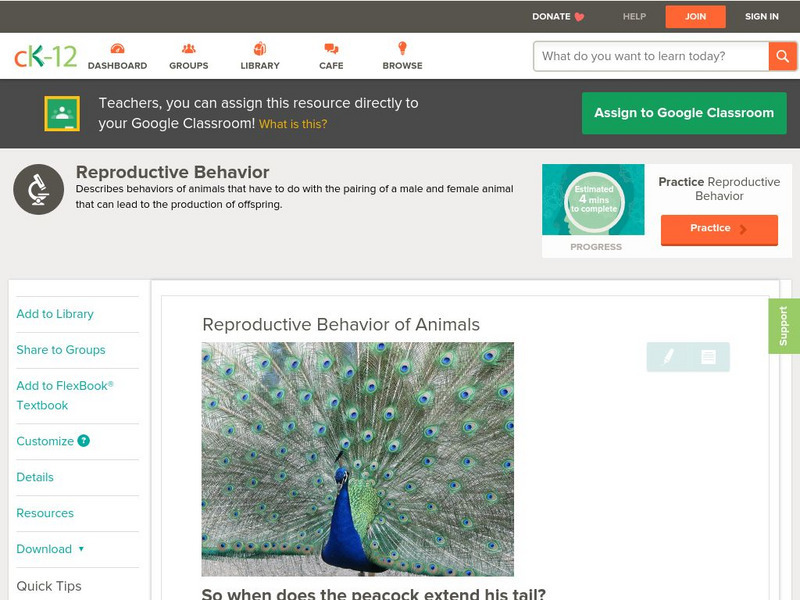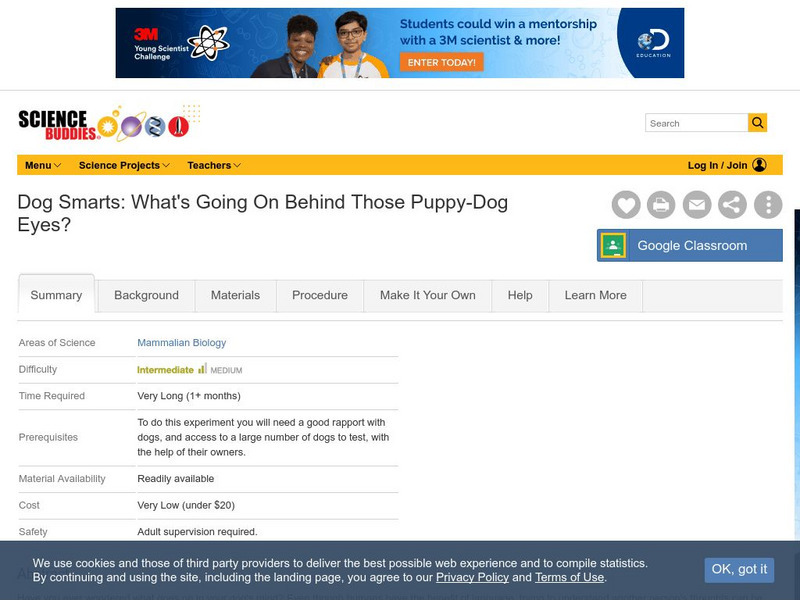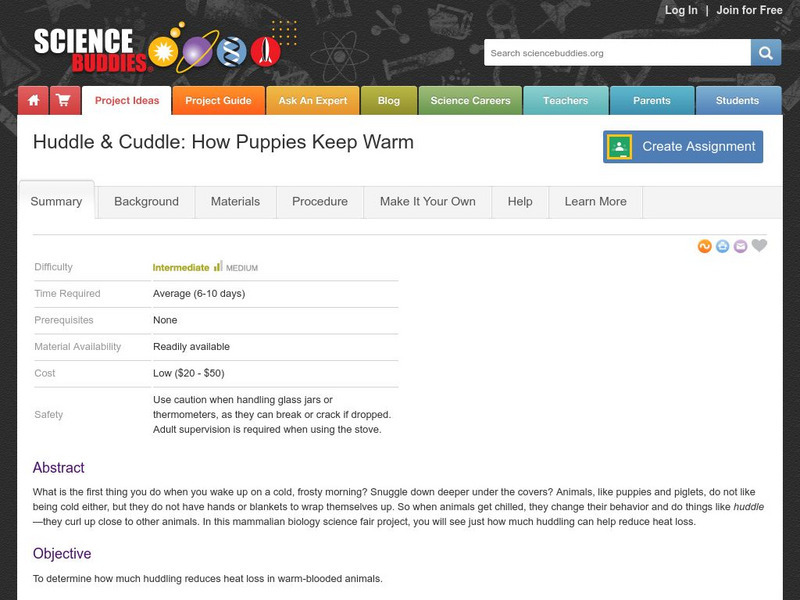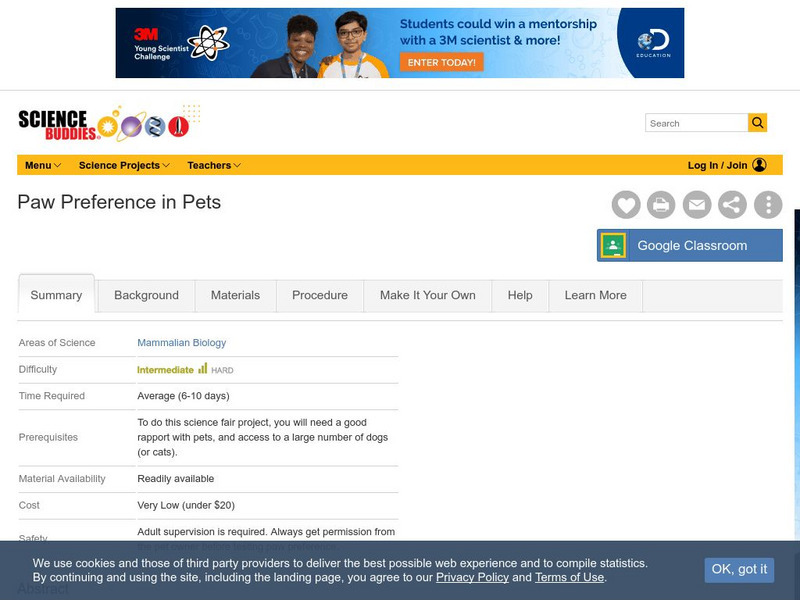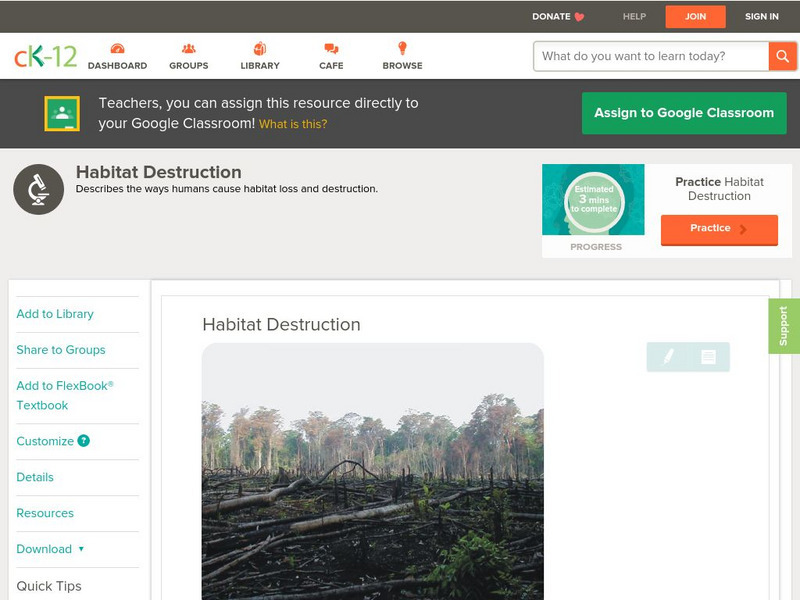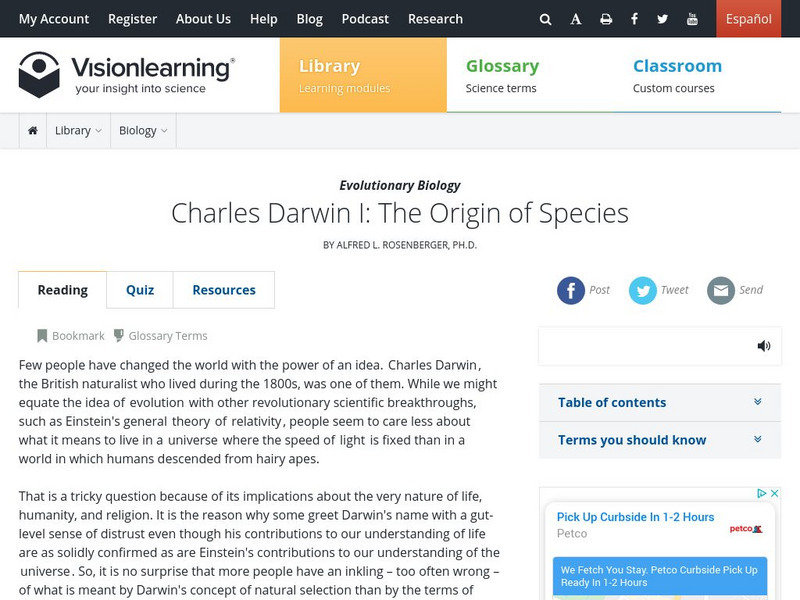Khan Academy
Khan Academy: Biological Explanations of Social Behavior in Animals Questions
Use these questions about the biological explanation of social behavior in animals to practice for the MCAT.
Soft Schools
Soft Schools: Animal Structure, Function, and Behavior Quiz
Take an interactive quiz over animal structure, function, and behavior. After completing the quiz, check your score, and then revisit any incorrect question for further review.
CK-12 Foundation
Ck 12: Earth Science: Biological Communities
[Free Registration/Login may be required to access all resource tools.] Provides an overview of biological communities.
CK-12 Foundation
Ck 12: Earth Science: Biological Communities
[Free Registration/Login may be required to access all resource tools.] Provides an overview of biological communities.
CK-12 Foundation
Ck 12: Life Science: Animal Communication
[Free Registration/Login may be required to access all resource tools.] What does the word "communication" make you think of? Talking on a cell phone? Texting? Writing? Those are just a few of the ways in which human beings communicate....
CK-12 Foundation
Ck 12: Life Science: Reproductive Behavior of Animals
[Free Registration/Login may be required to access all resource tools.] Some of the most important animal behaviors involve mating. Mating is the pairing of an adult male and female to produce young. Adults that are most successful at...
CK-12 Foundation
Ck 12: Biology: Reproductive Behavior of Animals
[Free Registration/Login may be required to access all resource tools.] An overview of the reproductive behaviors of animals.
Vision Learning
Visionlearning: Biology: Galapagos Finches
Interactive animation illustrates how Charles Darwin used his study of finch beaks to explain evolution. A phylogenetic tree diagram shows how the birds' color and beak shape changed over generations.
Science Buddies
Science Buddies: Tricks for Treats: How Long Does It Take to Train Your Pet?
Have you ever been to an animal show and seen a sea lion balance a ball on his nose, or a tiger jump through a hoop? Or maybe you've met dogs who can sit, fetch, shake, or beg on command. The range of tricks that you can teach animals is...
Science Buddies
Science Buddies: Dog Toys: What Makes One a Favorite or a Flop to Fido?
It seems as though dogs, like people, have definite preferences for their play things. This fun project investigates what makes a toy interesting to a dog. In these experiments, you and your dog can have some fun while you learn about...
Science Buddies
Science Buddies: Dog Smarts: What's Going on Behind Those Puppy Dog Eyes?
Have you ever wondered what goes on in your dog's mind? Even though humans have the benefit of language, trying to understand another person's thoughts can be hard enough sometimes. This project will show you some behavioral tests you...
Science Buddies
Science Buddies: Project Ideas: Huddle and Cuddle: How Puppies Keep Warm
In this mammalian biology science fair project, students will determine how much huddling reduces heat loss in warm-blooded animals. The Science Buddies project ideas are set up consistently beginning with an abstract, objective, and...
Science Buddies
Science Buddies: Project Ideas: Pet Poll: A Taste Test for Fluffy and Fido
In this mammalian biology science fair project, students will determine which brand, type, or flavor of treats their pet prefers. The Science Buddies project ideas are set up consistently beginning with an abstract, objective, and...
Sumanas
Sumanas Inc: Life: The Science of Biology: Time Compensated Solar Compass
How do birds know what direction to fly when they fly south for the winter? This tutorial explains circadian rhythm using an experiment performed with pigeons.
University of Illinois
University of Illinois Extension: Urban Text: Adventures of Herman the Worm
WORMS- What are they? Where did they come from? If you are interested in Herman the Worm's family tree (biologically speaking), his body structures, or all the facts about him that you'll ever need, go to "The Adventures of Herman the...
Regents of the University of Michigan
Animal Diversity Web: Bombyx Mori (Silkworms)
Biological information about the silkworm, Bombyx mori, including habitat, physical description, behavior, food habits, and more.
Khan Academy
Khan Academy: Animal Communication
Learn how animals communicate with visual, sound, touch, and chemical signals.
Science Buddies
Science Buddies: Predators and Prey: How Do Cats Respond to Bird Sound
A science fair project that ask whether cats respond to familiar bird sounds more readily that bird sounds in general. The Science Buddies project ideas are set up consistently beginning with an abstract, objective, and introduction,...
Science Buddies
Science Buddies: Paw Preference in Pets
The great majority of people have a distinct hand preference. The goal of this science fair project is to determine whether non-primate mammals (e.g., dogs or cats) have a paw preference, which might indicate lateralization of function...
Science Buddies
Science Buddies: Tail Wagging and Brain Lateralization
The left brain is supposed to be better at language, and organizing sequential actions, the right brain is supposed to be better at visualizing orientations in space, making and listening to music, and deciphering the emotions of others....
Biology Corner
Biology Corner: Isopod Behavior Lab
This lab activity explores the environmental conditions preferred by the pill bug.
BioEd Online
Bio Ed Online: Sleep and Circadian Rhythms
The following lessons help students from grades 6-8 understand sleep and circadian rhythms. Lesson topics iinclude: day and night, seasons, sundails, clocks, sleep and sleep patterns and sleeping in space.
CK-12 Foundation
Ck 12: Life Science: Habitat Destruction
[Free Registration/Login may be required to access all resource tools.] From a human point of view, a habitat is where you live, go to school, and go to have fun. Your habitat can be altered, and you can easily adapt. Most people live in...
Vision Learning
Visionlearning: Biology: Charles Darwin I: The Origin of Species
Instructional module focusing on the early work of Charles Darwin. Discusses Darwin's key role in supporting and describing the theory of evolution as driven by natural selection. Site also includes an interactive practice quiz and links...







